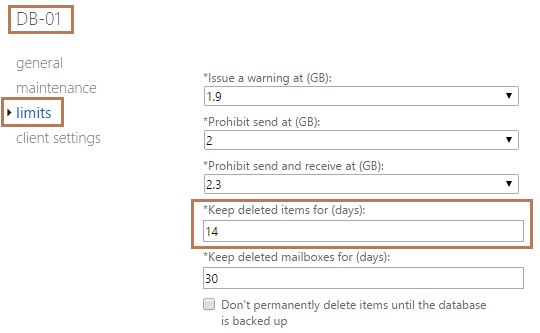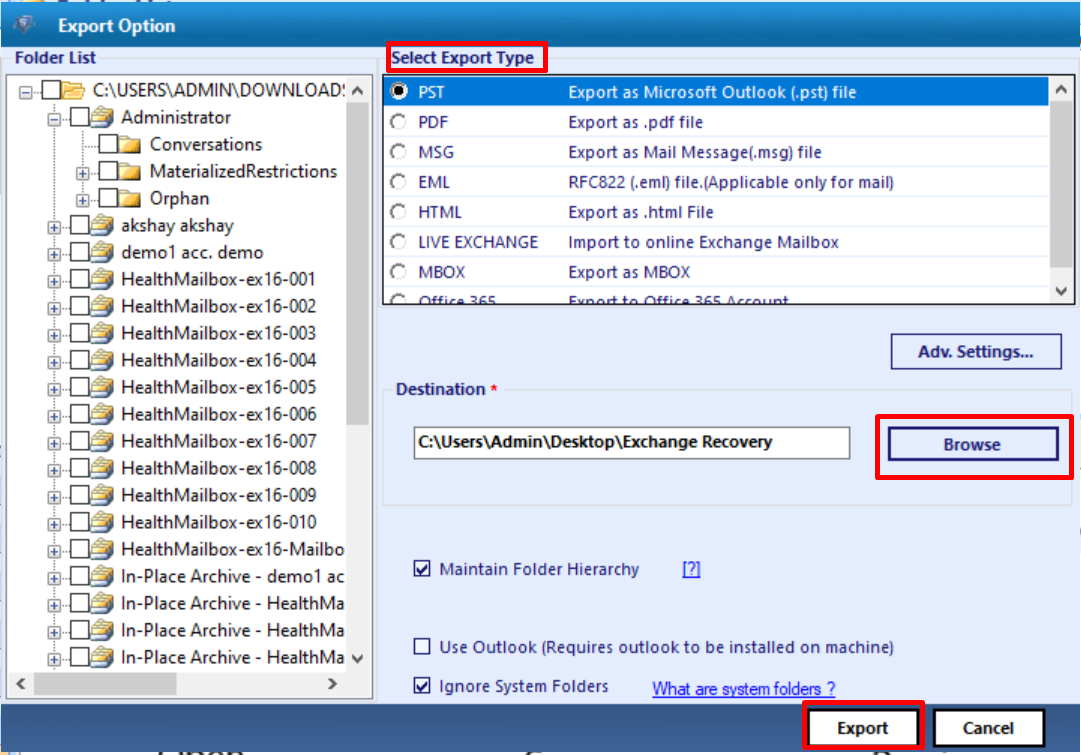

If you are using an IMAP account, you can recover deleted emails from Trash folder.
#RECOVER DELETED ITEMS FROM SERVER 2016 FREE#
For any questions fell free to use our comments section.Have you accidentally deleted some important emails from your Outlook account? There is no need to worry as you can simply recover those emails from the ‘Deleted Items’ or ‘Trash’ folder.Įssentially, when you hit the "Delete" button, email messages are not removed permanently.
#RECOVER DELETED ITEMS FROM SERVER 2016 WINDOWS#
Hope this article will serve you will in better understanding the way Recycle Bin feature can be used in Windows Server 2012. I think that you should enable this feature whenever possible if your enterprise security policy allows you to do so because human error can occur and being able to restore deleted objects fast is crucial in a production environment. I like the way Microsoft implemented Active Directory Recycle Bin feature in this Windows Server Edition because it makes System Administrators life much easier. You can now use the Active Directory Administrative Center console to perform this operation really fast. Once you’ve noted the display name of the deleted object, use Get-ADObject -Filter Īs you can see, the restoration process of deleted objects has been significantly simplified in Windows Server 2012. Execute Get-ADObject -filter ‘isdeleted -eq $true -and name -ne “Deleted Objects”‘ -includeDeletedObjects -property * to view AD deleted objects: You can perform a similar operation using Windows Powershell. Now navigate to the Deleted Objects OU to view its content:ĭeleted objects will appear under this Organizational Unit, to restore an object from it, simply click on the Restore (to restore to the same OU) or Restore To (to specify the restoration location) buttons:


Once this feature has been enabled, create a test user account and then delete it. Note that this operation is irreversible and you will be prompted during the configuration process: Now use Enable-ADOptionalFeature ‘Recycle Bin Feature’ -Scope ForestOrConfigurationSet -Target -Server WinSrv1 to enable it on your DC. Using Windows PowerShell: use the Get-ADOptionalFeature -Filter * cmdlet to list AD Optional Features:.Using the Active Directory Administrative Center console: open the console, navigate to the domain’s name section, right click the domain and select Enable Recycle Bin:.There are two ways in which you can enab le AD Recycle Bin: To view your forest functional level use the Get-ADForest cmdlet, if you are running a lower version, use the Set-ADForestMode -Identity -ForestMode Windows2012Forest command to change it to a higher level: This feature can be enabled if Domain Controllers run either Windows Server 2008 R2 or Windows Server 2012 and if the forest functional level is set to Windows Server 2008 R2 or higher. For older objects you can still use the methods mentioned previously. You can use Active Directory Administrative Center to restore objects that were deleted after this feature was enabled. Note that by default, Active Directory Recycle Bin is not enabled in Windows Server 2012. With the release of Windows Server 2012, this feature has been included into Active Directory Administrative Center and you can easily recover objects using this console. In Windows Server 2008 R2 you would have been able to restore objects by using Windows PowerShell only. I’ve never actually used this process because I usually worked in environments hosting multiple DC for data redundancy and I’ve always preferred the first method. To find out more about this restoration method, check out this article. Using tombstone reanimation – a difficult method that enabled you to recover deleted objects from CN=Deleted Objects.This process was tricky if the DC was running in a production environment so taking it down for a while had some consequences. Using ntdsutil command line tool – the problem with this method was that you had to reboot the Domain Controller into DSRM (Directory Services Restore Mode) which made your server unavailable for a period of time.There were two methods that could be used to recover objects, but each of them had a drawback: Before the Active Directory Recycle Bin was introduced, the restoration process of deleted objects was a painful and difficult process. This new feature added the so called AD Recycle Bin which enables Administrators to easily recover deleted objects. Windows Server 2008 R2 introduced a new way in which deleted objects can be recovered within an Active Directory infrastructure.


 0 kommentar(er)
0 kommentar(er)
